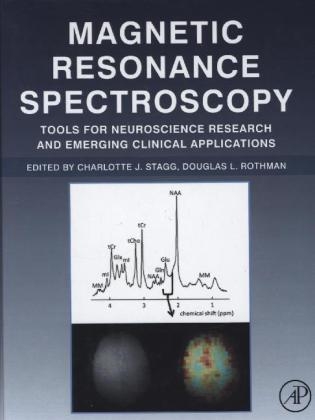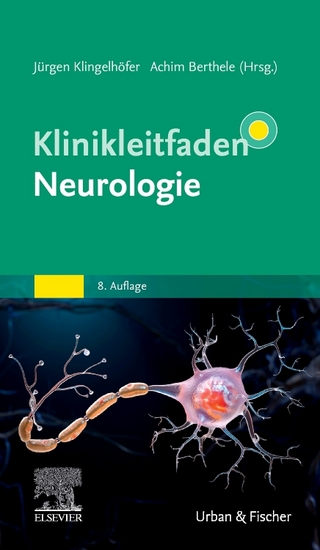
Magnetic Resonance Spectroscopy
Academic Press Inc (Verlag)
978-0-12-401688-0 (ISBN)
Magnetic Resonance Spectroscopy: Tools for Neuroscience Research and Emerging Clinical Applications is the first comprehensive book for non-physicists that addresses the emerging and exciting technique of magnetic resonance spectroscopy. Divided into three sections, this book provides coverage of the key areas of concern for researchers. The first, on how MRS is acquired, provides a comprehensive overview of the techniques, analysis, and pitfalls encountered in MRS; the second, on what can be seen by MRS, provides essential background physiology and biochemistry on the major metabolites studied; the final sections, on why MRS is used, constitutes a detailed guide to the major clinical and scientific uses of MRS, the current state of teh art, and recent innovations.
Magnetic Resonance Spectroscopy will become the essential guide for people new to the technique and give those more familiar with MRS a new perspective.
Charlotte Stagg is a British neurophysiologist who is a professor at the University of Oxford. She leads the Physiological Neuroimaging Group. Stagg studied physiology and medicine at the University of Bristol, graduating with pre-clinical and clinical honours and the Physiological Society prize. For her doctoral degree, she moved to the University of Oxford and worked at the Oxford Centre for Functional Magnetic Resonance Imaging (MRI) of the Brain (FMRIB) under the supervision of Paul Matthews and Heidi Johansen-Berg. During her DPhil, she looked to understand how people acquire new motor skills. She joined the Neuroplasticity group for her first postdoctoral position. In 2010 she moved to the Sobell Department of Motor Neuroscience and Movement Disorders, where she worked with John Rothwell for half a year, before joining Andrew Maudsley at the University of Miami. There she became interested in in vivo magnetic resonance spectroscopy. Dr. Rothman is director of the Magnetic Resonance Research Center (MRRC) at the Yale School of Medicine. The MRRC presently supports the NIH- funded work of more than 70 Principal Investigators, as well as 13 program project grants and center grants. Dr. Rothman has an international reputation as a leader in the development of novel MR methods for the study of brain, liver, and muscle metabolism and function. Among the many MR 'firsts' of his team of bioimaging scientists have been the development of MR methods for imaging glutamate and GABA neurotransmission, brain energy metabolism, and liver and muscle glycogen and glucose metabolism and metabolic control. He is presently supported by two R01 grants, and has served as the primary mentor of six postdoctoral fellows and two students. His postdoctoral fellows have all gone on to faculty positions at major research institutions in the US and abroad. He is a named mentor on five K awards at different levels and is an informal mentor to many other junior and mid-level faculty members in the use of MR technology in their research.
Section 1: Technical Aspects - How MRS Is Acquired 1.1 Basis of Magnetic Resonance 1.2 Localized Single-Voxel Magnetic Resonance Spectroscopy, Water Suppression, and Novel Approaches for Ultrashort Echo-Time Measurements 1.3 Technical considerations for Multivoxel Approaches and Magnetic Resonance Spectroscopic Imaging 1.4 Spectral Editing and 2D NMR 1.5 Spectral Quantification and Pitfalls in Interpreting Magnetic Resonance Spectroscopic Data: What to Look Out For
Section 2: Biochemistry - What Underlies the Signal? 2.1 N-Acetylaspartate and N-Acetylaspartylglutamate in Central Nervous System Health and Disease 2.2 The Biochemistry of Creatine 2.3 The Biochemistry of Choline 2.4 Glutamate 2.5 Other Significant Metabolites: Myo-Inositol, GABA, Glutamine, and Lactate
Section 3: Applications of Proton-MRS 3.1 Usefulness of Proton Magnetic Resonance Spectroscopy in the Clinical Management of Brain Tumors 3.2 Multiple Sclerosis and Inflammatory Diseases 3.3 Epilepsy 3.4 Stroke and Cerebral Ischaemia 3.5 Use of MRS in Inborn Errors of Metabolism: Canavan’s Disease and MRS in Differential Diagnosis 3.6 MRS of Psychiatric Disorders 3.7 Preclinical and Clinical Applications of 1H-MRS in the Spinal Cord 3.8 Interindividual Differences in Behavior and Plasticity 3.9 MRS in Development and Across the Lifespan 3.10 Hormonal Influences on Magnetic Resonance Spectroscopy Measures 3.11 Magnetic Resonance Spectroscopy in Neuroenergetics and Neurotransmission
Section 4: Applications of Non-Proton MRS 4.1 Quantitative Metabolic Magnetic Resonance Imaging of Sodium, Oxygen, Phosphorus, and Potassium in the Human Brain: A Rationale for Bioscales in Clinical Applications 4.2 Carbon (13C) MRS 4.3 Hyperpolarized Magnetic Resonance Imaging and Spectroscopy of the Brain
| Verlagsort | San Diego |
|---|---|
| Sprache | englisch |
| Maße | 216 x 276 mm |
| Gewicht | 1290 g |
| Themenwelt | Medizin / Pharmazie ► Medizinische Fachgebiete ► Neurologie |
| Medizin / Pharmazie ► Medizinische Fachgebiete ► Radiologie / Bildgebende Verfahren | |
| ISBN-10 | 0-12-401688-X / 012401688X |
| ISBN-13 | 978-0-12-401688-0 / 9780124016880 |
| Zustand | Neuware |
| Haben Sie eine Frage zum Produkt? |
aus dem Bereich


